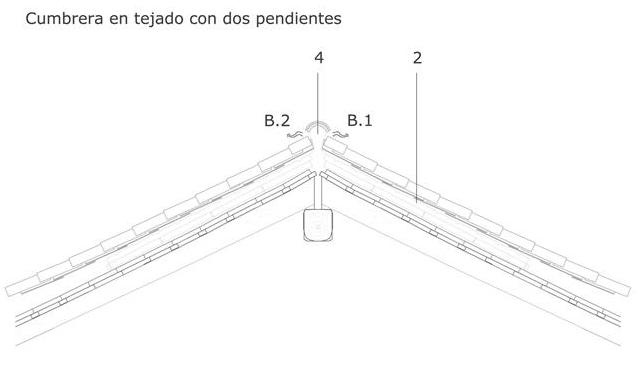Jan 29 2015
Researchers at the Universitat Jaume I of Castellón have developed a modular ventilation system for pitched roofs that solves the problem of heat accumulation by solar radiation under the roofs without the need for refrigeration.

The patented system by the UJI is a passive and energy efficient solution for thermal conditioning of buildings. The module can be applied to restoration and rehabilitation of roofs, especially to those of historical value, and to new premises.
“Both in single-family homes and multi-family building attics is becoming increasingly significant and necessary to optimize plant occupation and living spaces that were traditionally reserved for other activities in plants under cover. The problem of these spaces is that the temperature is usually very high due to direct radiation”, explains Juan Antonio Garcia Esparza, researcher at the group of Technology, Quality and Sustainability in Building of the UJI. The solution developed by the researchers allows dissipating heat through external natural ventilation through some modules that manufacture and installation is simple, economic and agreed to the legislation on economic efficiency.
The patented module comprises a frame with an elongated and flat configuration with a sectional shape of inverted “U”. This framework is intended to join the structural elements of the cover so that it is created a space between the upper face of the frame and the cover through which the air flows, allowing refrigeration. “Several frames, that lock together, are used to coat the entire cover. In addition, are placed some eaves with several openings also designed to allow airflow. In order to set them, there are some openings near the ridge of the roof”, explains Garcia Esparza. This system allows the air to enter through the openings in the eaves, traverse the deck through the free space created by the frameworks and exit through the openings of the ridge. This free flow of the air through the roof cools the interior of the building that is directly under the cover, thus improving comfort conditions of these spaces.
This technology offers solutions for new buildings by improving their energy efficiency at a reduced cost, and is also useful in historic buildings or monuments which are to be preserved as sites of heritage interest, improving their habitability and comfort without affecting their structure because, as Garcia Esparza says, the module prevents a large impact on its performance and it doesn’t damage the support material irreversibly.
Once developed and patented the technology from the group of Technology, Quality and Sustainability in Building, has begun the phase of finding industrial partners to transfer the technology for commercialization.